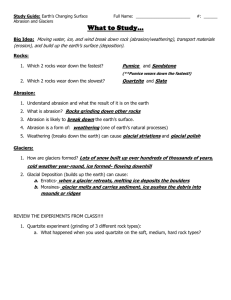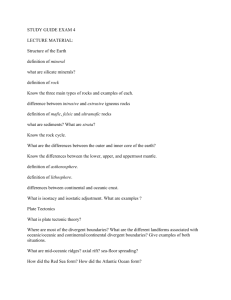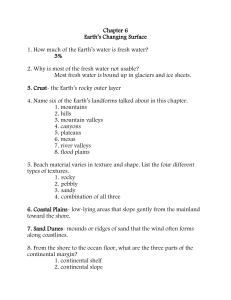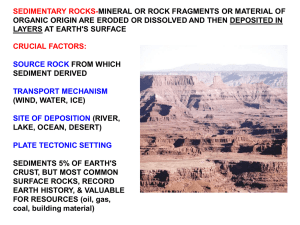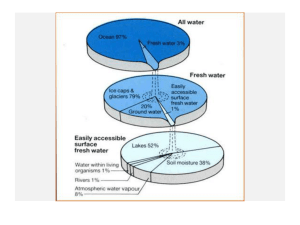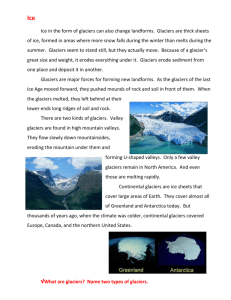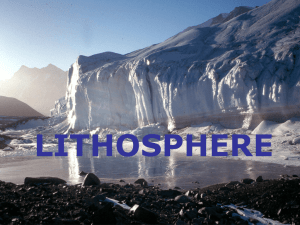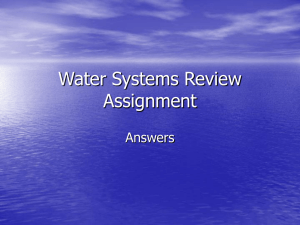File - Miss Evans
advertisement
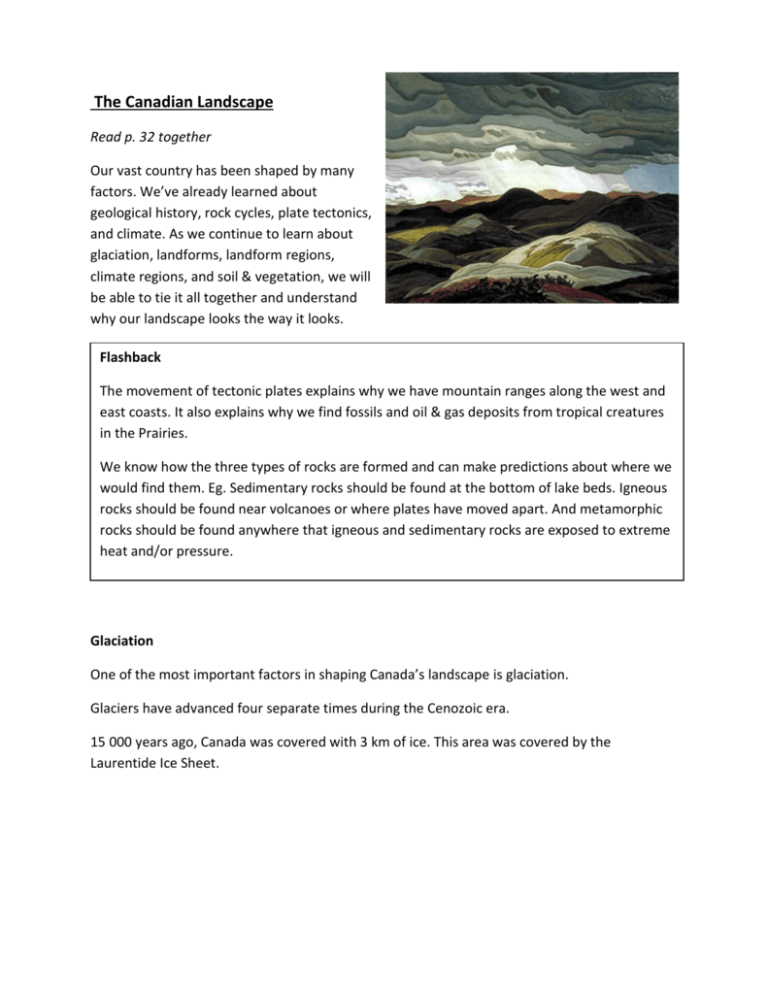
The Canadian Landscape Read p. 32 together Our vast country has been shaped by many factors. We’ve already learned about geological history, rock cycles, plate tectonics, and climate. As we continue to learn about glaciation, landforms, landform regions, climate regions, and soil & vegetation, we will be able to tie it all together and understand why our landscape looks the way it looks. Flashback The movement of tectonic plates explains why we have mountain ranges along the west and east coasts. It also explains why we find fossils and oil & gas deposits from tropical creatures in the Prairies. We know how the three types of rocks are formed and can make predictions about where we would find them. Eg. Sedimentary rocks should be found at the bottom of lake beds. Igneous rocks should be found near volcanoes or where plates have moved apart. And metamorphic rocks should be found anywhere that igneous and sedimentary rocks are exposed to extreme heat and/or pressure. Glaciation One of the most important factors in shaping Canada’s landscape is glaciation. Glaciers have advanced four separate times during the Cenozoic era. 15 000 years ago, Canada was covered with 3 km of ice. This area was covered by the Laurentide Ice Sheet. Quickly shade the map of Canada to show which regions were covered by ice during the last ice age using Fig 2-16 on page 43. Today Canada still has glaciers on Ellesmere and Axel Heiberg Islands. Mark these on your map. Scientists believe there may be another glacial advance on approximately 100 000 years. Glacial Landforms Erosional effects are caused by moving glaciers. These act like bulldozers, scraping the surface of the Earth and pushing rocks & soil along the ground. Common landforms: Striations: long parallel scrape marks where rocks dragged by glaciers gouged the earth. U-shaped valleys: these were scraped out of regular river valleys where the ice followed a river bed. When u-shaped valleys meet the ocean they form fjords (aka fiords). Eskers: s-shaped hills created by a glacier with a melt-hole underneath. Depositional effects are caused by glaciers leaving rocks & soil behind, either when the glacier was moving or when it melted. Common landforms: Till plains: large areas of rocks & soil left behind by glaciers. The source of today’s gravel pits! Moraines: ridges of earth left behind when a glacier melts. These can form along the sides and Southern end of glaciers. Kettle lakes: small, deep lakes that were created by chunks of ice left behind by glaciers. The ice compressed the land into a hole, then melted to fill it. Erratics: large rocks, often igneous, found far from their source. Eg. In Bruce County we have lots of erratics that were dragged here from the Canadian Shield. Drumlins: the tear-shaped hills were formed by deposits that got dragged along so they are round on one side and slope down on the side where they were dragged by the glacier. Great Lakes Formation The Great Lakes were formed by the gouging and erosion of the Laurentide ice sheet as it travelled across softer rock (the limestone formed by ancient seas). This heavy ice also compressed the surface of the earth. When the glacier melted, the lake basins filled with meltwater. Today the land is still rebounding from the weight of the glaciers, so our shoreline rises a little bit every year!
